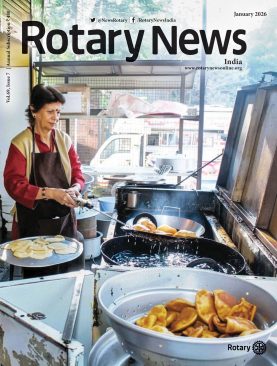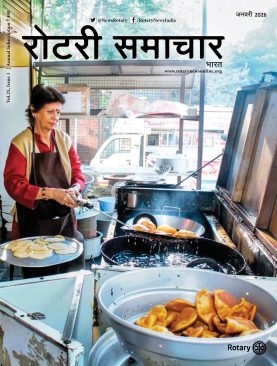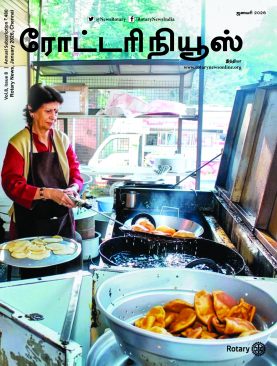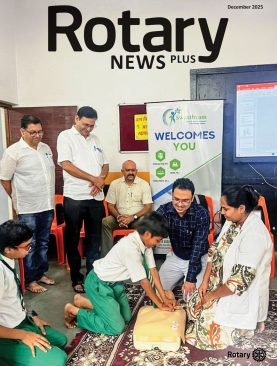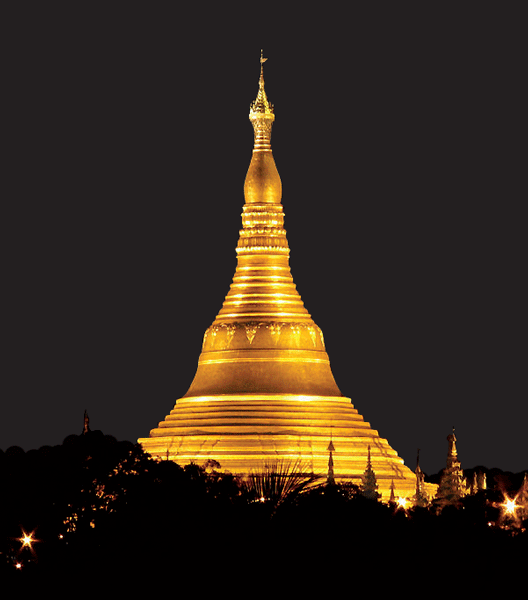
One of the insidious effects of colonialism and obsession with the Western world is that we know so little about our own heritage. And even less about how our traditions have taken roots in nearby lands, adapted and flourished. My frequent travels to Java (Indonesia), particularly to Yogyakarta, popularly referred to as Jogja, with the nearby monuments of Borobudur and Prambanan, also triggers the feeling that this is India as it would have been without British rule.
A recent visit to Myanmar and discussions with some academicians, retired diplomats and businesspersons of Indian origin brought out the complex ways in which the Myanmarese took to and have adapted aspects of Indian philosophical, metaphysical, religious, linguistic and cultural ethos. It was also a pointer on how going forward the two countries can work together in the fields of commerce, economic growth and diplomacy.
Most people associate the introduction of Buddhism by monks sent by Emperor Ashoka as marking the beginning of Indian influence in Myanmar, but as a number of scholars told us, the links are older. Even today, Sanskrit is a compulsory subject taught in Yangon University. The museum in the ancient temple city of Bagan, home to thousands of temples, is located in an old Hindu temple. Our recent history has been more mixed. The British joined Myanmar (Burma) to India, exiled the last Mughal emperor Bahadur Shah Zafar to Yangon (Burma), and later the last ruler of Myanmar, Thibaw, to Ratnagiri.
Early Indian influence
Indian professionals dominated Burma from early 20th century, its teachers taught in the University and its clerks filled the government. Indian traders dominated commerce and industry. Often these single men in business took local ‘wives,’ but did not extend legitimacy to the offsprings from such unions. This gave Indians a bad name.
Post-independence the two countries were close friends but the military coup and subsequent nationalisation of all economic activities meant an exodus of Indians, particularly the educated and affluent classes. Presently there are over 2 million Myanmarese of Indian origin, including quite a few in business.
There are Hindu temples all over the country, but the community is considerably integrated and use the local language. The younger generation has little knowledge of Indian ‘domination,’ or even India. However India’s success in IT, and breaking out of the poverty trap are appreciated.
After more than half a century of military rule, almost two decades under crippling sanctions, Myanmar is emerging as a rising economy. Its recent political reforms have been rewarded with the West dropping most, though not all, sanctions, and in less than five years, Myanmar has emerged from the economic backwaters to becoming one of ASEAN’s rising stars.
Even today, Sanskrit is a compulsory subject taught in Yangon University.
Before one looks at how the two countries can step up their mutual economic engagement, it would be worthwhile to look at the baseline parameters.
Gateway to ASEAN
Myanmar is India’s gateway to ASEAN. It is a member of a subset of ASEAN — CLMV or Cambodia, Lao PDR,
Myanmar and Vietnam, four countries that are moving from central planning to a market economy. These countries are the fastest growing economies of ASEAN, though presently they account for only 9 percent of ASEAN’s GDP, while occupying 32 percent of its land area. Primarily agrarian economies, these countries have vast potential, abundant natural resources and a low-wage labour force. Other than Vietnam, these are all Less Developing Countries (LDCs), which means they have access to low cost development assistance as well as the crucial preferential access to developed country markets.
Myanmar’s GDP was $56.8 billion in 2013–14; making its per capita income $1105 with a population of 51.4 million. Its economy grew 8.3 percent in 2013–14, and is on track to expand by 8.5 percent in 2014–15, driven by recovery in agriculture, gas production and investment.
According to the World Bank, Myanmar has “one of the lowest population densities in the region, fertile lands,
significant untapped agricultural potential, and a rich endowment of natural resources.” Being geographically located next to India and China, it seems “well positioned to resume its traditional role as a regional trading hub and a key supplier of minerals, natural gas and agricultural produce.”
Myanmar’s natural resources are plentiful, including natural gas, copper, timber and gemstones, apart from petroleum, tin, antimony, zinc, tungsten, lead, coal, marble, limestone and hydropower.
On the face of it, growth in Myanmar would be driven by investments in power, petroleum and infrastructure. There is a huge potential for investments in agro-processing, wood and wood products, construction material, downstream products of petroleum and natural gas like fertilisers.
India must build upon its historical, cultural and economic role that would facilitate Myanmar’s journey into the unchartered seas of economic, social and political modernisation. The Myanmarese elite want to see a greater role for India, as they do want strategic space for their country, and see themselves more comfortable with India’s historical non-aggressive approach. Mutual effort for mutual gain is the way forward.
(The author, a retired IAS officer, is Director, South Asian Institute for Strategic Affairs and worked for the UN in Afghanistan.)
Opportunities for Indian investors
Though India is an important market for Myanmar (third largest export market after China and Thailand), our exports are relatively less though growing (seventh largest supplier accounting for 3 percent of Myanmar’s global imports). India is also largely absent as a source of FDI. Indian FDI in Myanmar is $360 million, 98 percent being in the petroleum & gas sector. If you take this away, India’s presence is negligible.
It is clear from these statistics that the opportunities and challenges of economic cooperation between our two countries are huge. There is a lot that can be achieved through technical assistance and relatively-low levels of investments across a wide spectrum of fields.
For this to be achieved, a partnership between the Indian government and private sector and the Myanmarese Government and non-government entities will be mutually beneficial. There is scope for Indian entities to create social and economic capabilities in Myanmar to trigger economic growth. The Govt. of India, by facilitating such intervention, will prove it wants friendly relations with Myanmar.
If the shipping and banking links between the two countries can be stepped up, Indian mid-caps would benefit. Assocham, already present there, and the Indian-origin business community can provide access to the local market. Once India completes the construction of the Kaladan multi-modal transport project that would provide access to Mizoram and the North-East through the Sittwe port, Indian entrepreneurs can exploit growth opportunities in Myanmar.
As Myanmar looks for investments and technology to create wealth and add value to its abundant raw materials, the social changes taking place, if unguided, can create chaos in society. It is here that India’s soft power, reflecting the genius of the Indian people, can play a useful role in working with thought-leaders of Myanmar and help the country ride the storm of globalisation by building on the strong ethical foundations of the Indo-Myanmarese traditions. Highly respectable Buddhist teachers like Sitagu Sayadaw have been working on preserving, highlighting and propagating physical and spiritual achievements of these shared traditions. These efforts should be supported, supplemented and made more diverse.

